Perigord Scenes
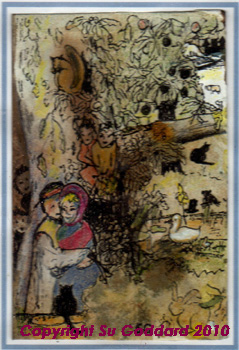
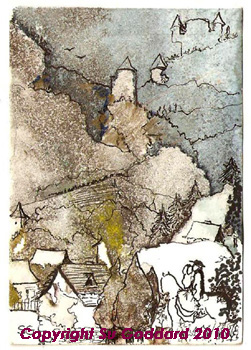
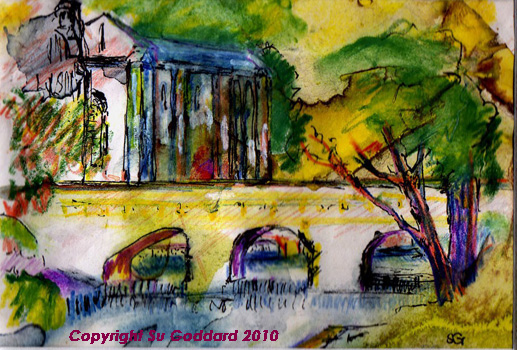
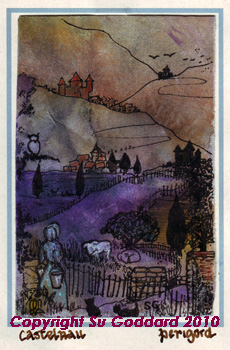
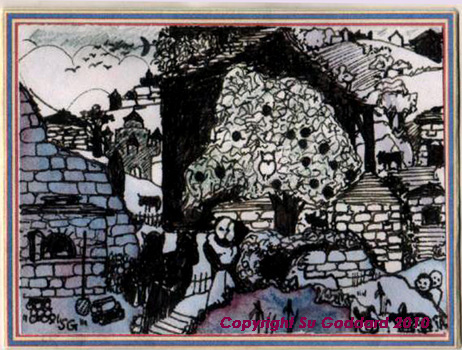
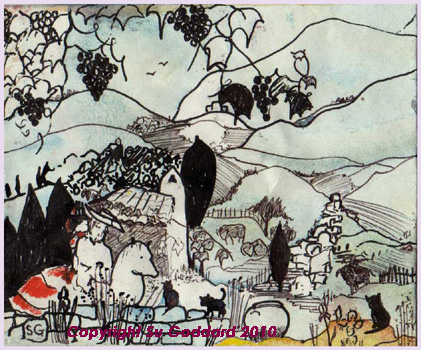
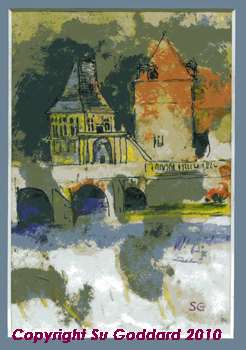
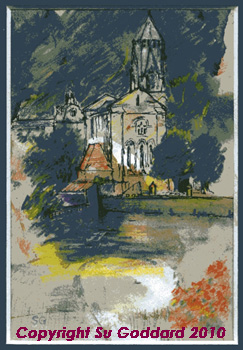
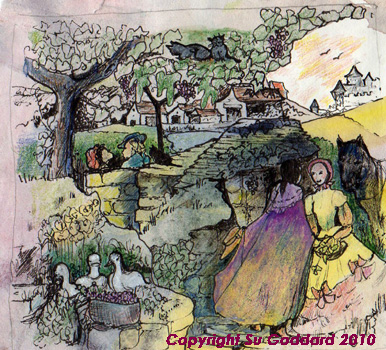
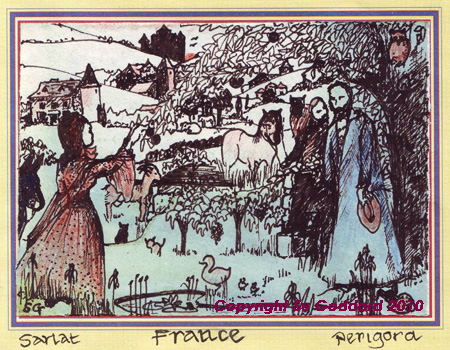
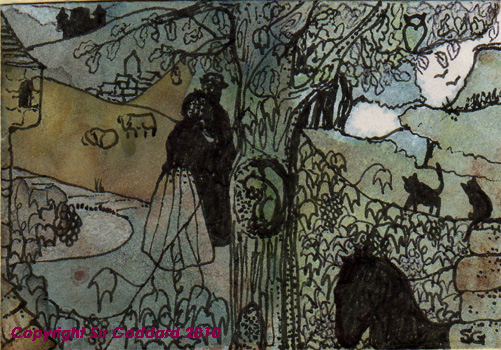
These works are for sale in original or print form with prices ranging from £20 - £100. Please contact us for details.
Su Goddard lived in the Dordogne for almost forty years. Both of her houses were deep in the countryside, surrounded by forests and meadows, and that has been a constant inspiration for her art.
The Dordogne (which is also referred to as the Perigord) is a region rich in history, and although it is now prosperous and associated with all the up-to-date trappings of consumerism and tourism, within the living memory of those whose experiences go back to the 'sixties and 'seventies it exhibited many of the features of rural life as they had existed for centuries. Aspects of that life, although picturesque and satisfyingly traditional, were associated with poverty and hardship, celebrated in the writings of Eugène Le Roy (1836-1907), especially Jacqou le Croquant. He is a sort of French Thomas Hardy (he was born in 1840), and warns us about the dangers of an easily sentimental and nostalgic response to the past.
A film version of one of his novels, L'Ennemi de la Mort, was made twenty-five years ago. It celebrates the story of a young doctor (played by Bernard-Pierre Donadieu) who tries to counteract the inertia and hostility of the local population, and especially the entrenched aristocrats, by draining the unhealthy ponds in the area and fighting malaria. The house chosen by the film-makers as the doctor's residence was Etourneau, near Brantôme, and this is the house, a late-medieval fortified manor, in which Su Goddard lived. Living there put her in immediate contact with a distant past, and it contrasted strongly with the character of modern life. Etourneau (and Su's previous house, which was also late-medieval), and the surrounding woods and villages, is an inspiration for her work, which celebrates the life of local communities as lived the day before yesterday. Her aim in the depiction of this life is to recreate a mode of existence characterised by wholesomeness and integrity, and genuine labour. It resembles the world celebrated at the beginning of the nineteenth century by the visionary artists Samuel Palmer, Edward Calvert and their Kent circle ('The Ancients' as they were called), and it is no accident that stylistically Su Goddard's work, with its intense detailism and scrupulous attention to authentic facts, bears a reminiscence of their work.
©
2008-2025 All images and text copyright Su Goddard
Website developed by 2m